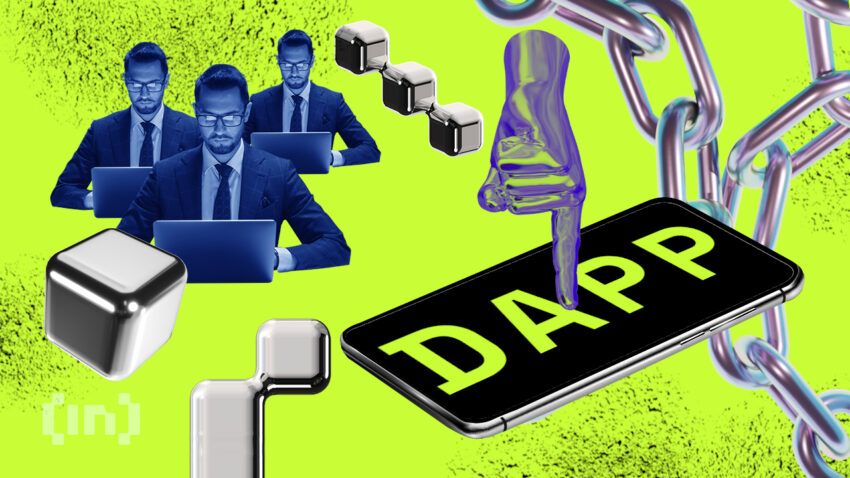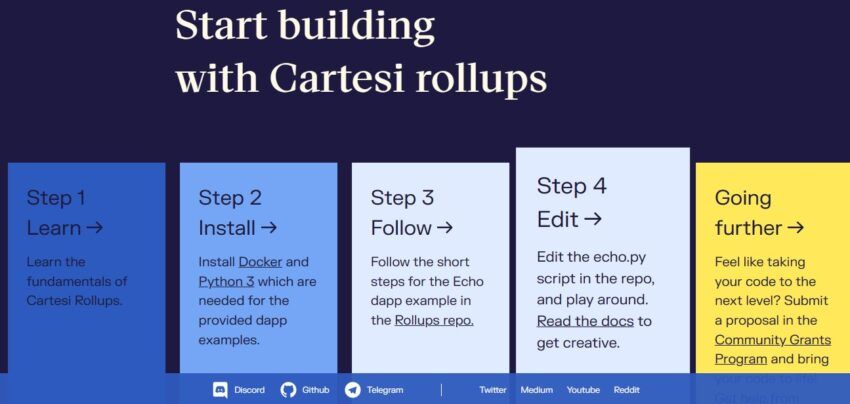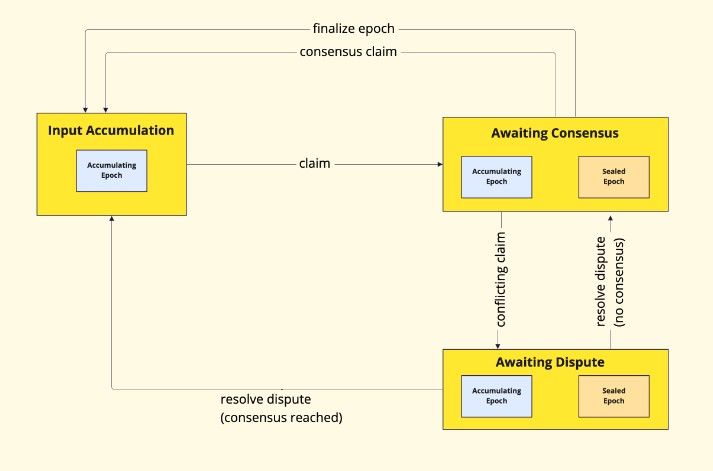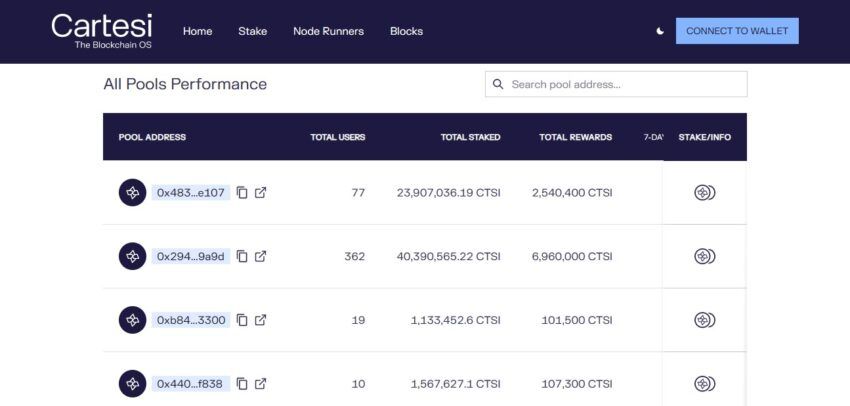Decentralized applications (DApps) have provided a means for DeFi users to interact with smart contracts on a blockchain. This system forms the backbone of what we see today in on-chain activities. However, developers with traditional programming skills have difficulty with blockchain infrastructure. Cartesi offers a solution that provides DeFi users with operating systems with which they are already familiar.
This Cartesi guide will explore what makes it a sought-after DApp programming environment, the importance of its decentralized layer-2 infrastructure, and everything else you need to know.
KEY TAKEAWAYS
► Cartesi bridges traditional programming with blockchain, allowing DApp development on a Linux-based virtual machine.
► Cartesi’s layer-2 solutions, including Optimistic Rollups and the Noether side chain, support off-chain computation, reducing costs and improving scalability for DeFi applications.
► The CTSI token powers Cartesi’s network, offering utility for transaction fees, staking rewards, and governance participation.
► Cartesi’s staking options and wallet integration enable users to contribute to network security and earn rewards.
What is Cartesi?

Cartesi is a layer-2 scaling solution for decentralized networks that facilitates DApp development using familiar programming software. While Ethereum is the main network that runs these DApps, most of the smart contracts use the Solidity programming language.
However, not all developers are familiar with this, so creating DApps on a blockchain requires additional training and learning. Cartesi improves blockchain scalability by offering a Linux-based virtual machine, making it more accessible to developers.
Essentially, the scaling solution acts as the bridge between traditional software environments — such as Linux — and the blockchain. The result is a new operating system that allows for faster programming and, thus, faster web3 expansion.
BeInCrypto Trading Community in Telegram: read reviews on the best crypto projects, get the hottest news on crypto, read technical analysis on coins & get answers to all your questions from PRO traders & experts!
Team & funding
Erick de Moura is both the CEO and co-founder of the Cartesi project. In the past, he has worked as a software designer for WiNGs Telecom, a software developer at Arizona Bay, and an engineer for WebRadar. Alongside Moura, computer graphics professor Diego Nehab also serves as the co-founder and CTO. Other prominent team members include CSO Augusto Teixeira and COO Colin Steil.
Note that the project has received investment from names including Bigbang Angels, Taiwan Startup Stadium, ICONIUM, SOSV, and Artesian VC.
History
Founded in 2018, Cartesi was originally intended as a trustless artificial intelligence marketplace before evolving into a blockchain operating system. Inspired by a goal to increase DApp network adoption, COO Teixeira persuaded one of IOTA’s co-founders to invest in the project’s development.
Soon after, 100 million CTSI tokens were sold in 2020, and plans to eventually further decentralize the project’s governance are underway. Currently, the founding members have a majority stake in decision-making.
The Cartesi Foundation was founded in 2018. It is a non-profit organization that supports the development of the Cartesi Network. The Cartesi Foundation utilizes the Cartesi Community Grants Program to fund education, grants, strategic alliances, and other activities.
How does Cartesi work?

Cartesi provides a Linux virtual programming environment, optimistic rollups, and side chains for the DApp ecosystem. These blockchain scalability solutions enable the system to operate smart contracts on Linux OS resources.
Consequently, this allows developers to perform intensive off-chain computations that are not traditionally available on blockchains. Moreover, the platform utilizes a combination of both on-chain and off-chain components for its functioning:
- Cartesi machine: The Cartesi Virtual Machine is the base infrastructure that is based on Linux. The machine enables Cartesi nodes to facilitate off-chain computations. This process allows for unlimited data to be processed while the Cartesi Machine takes care of all the DApp logic.
- Cartesi optimistic rollups: The optimistic rollups are a layer-2 system that allows for off-chain smart contract computations. As a result, higher scalability is achieved. It is also capable of bridging tokens between layer-1 and layer-2.
- Noether side chain: The Noether side chain is used for data storage and memory off the main blockchain. Over time, it deletes data that is not being used, which helps reduce gas fees and increases storage management.
- Descartes rollups: Descartes SDK also enables off-chain computations, and the DApp participants are the ones who verify instead of full nodes, which is common on traditional blockchains. This eliminates transaction fees.
Below is an illustration of how the nodes operate in consensus and epoch intervals.

Cartesi features
Although Cartesi may have provided the first blockchain OS that runs on familiar programming software, it’s not the first to offer optimistic rollup solutions. Yet, the project still manages to set itself apart from other similar platforms.
For one, its application-specific roll-up solution gives more power to individual validators. Below are some of the main features that set Cartesi apart from others.
- High scalability — Cartesi’s Descartes software development kit has enabled the platform to perform immense computational scalability without compromising decentralization. This is done by implementing off-chain rollups.
- Mainstream programmability — Programmers can code DApps and smart contracts using mainstream software sources on a Linux VM. Moreover, Cartesi is the only solution of its kind that is fully verifiable.
- Portability — Due to Cartesi’s off-chain node functionality, it is not limited to just one blockchain; Cartesi can run on most major chains, including Binance Smart Chain (BSC), Ethereum, and Polygon (formerly known as Matic).
- Privacy — Those who wish to conceal their DApp data can do so with the privacy that Cartesi offers.
CTSI token
The Cartesi (CTSI) token is the native utility token that powers Cartesi’s sidechain infrastructure. The token is also used to pay transaction fees and to verify blocks. CTSI can even be used as a form of payment for some shops via the project’s trusted partners. In addition, Cartesi’s grant program gives governance power to the token, providing stakers with voting power.
Tokenomics

Token distribution was as follows:
- Pre-sale allocation: 6.7 million (25% unlocked every four months)
- Binance launchpad sale: 100 million
- Private sale: 50 million (12-month cliff with 11.1% unlocking every quarter)
- Seed sale: 20 million (12-month cliff with 14.3% unlocking quarterly)
Staking
CTSI holders can stake their tokens and earn rewards for participating in the network. Below is Cartesi’s pool performance list, in which investors can view the pool’s users, their rewards, the amount staked, and additional information.

What is Cartesi staking?
Cartesi staking is a process where CTSI token holders participate in securing the Cartesi network by locking up their tokens in a designated platform. By doing so, participants help maintain the network’s integrity and receive staking rewards in return.
The primary benefit of Cartesi staking is that it allows users to earn CTSI passively while contributing to the network’s security and efficiency.
How to stake Cartesi
Staking Cartesi (CTSI) is a straightforward process. Yet, you still need to be aware of the steps:
- Choose a wallet: Select a compatible wallet, such as MetaMask, Trust Wallet, or Cartesi Wallet, to store your CTSI tokens.
- Transfer CTSI: Deposit your CTSI tokens into your chosen wallet.
- Connect to a staking platform: Use your wallet to connect to a reputable staking platform. Some popular platforms include Binance Staking and Staking Rewards.
- Start staking: Follow the platform’s instructions to stake your CTSI tokens. This typically involves selecting the amount you wish to stake and confirming the transaction.
By following these steps, you can participate in the staking process, earn CTSI, and enjoy the benefits of Cartesi staking.
The future for Cartesi
Cartesi’s vision paid off for those involved in the DeFi space. The platform has created the necessary bridge between the old traditional blockchain infrastructure and a newer system that is more accessible to a wider range of players.
With the added layer of its roll-up feature, Cartesi successfully facilitates some of the ever-expanding requirements of blockchain users: interoperability, streamlining scalability, and reduced transaction fees. Overall, the platform takes a developer-friendly approach to decentralized finance, which will likely contribute toward its enduring stability and appeal.
Disclaimer: This article is for informational purposes only and should not be considered investment advice. Investing in any crypto, including CTSI, carries significant risk. Profits are never guaranteed.
Frequently asked questions
What does Cartesi crypto do?
Is Cartesi on Ethereum?
Why is Cartesi important?
What are Descartes Rollups?
What is the CTSI token used for?
Disclaimer
In line with the Trust Project guidelines, the educational content on this website is offered in good faith and for general information purposes only. BeInCrypto prioritizes providing high-quality information, taking the time to research and create informative content for readers. While partners may reward the company with commissions for placements in articles, these commissions do not influence the unbiased, honest, and helpful content creation process. Any action taken by the reader based on this information is strictly at their own risk. Please note that our Terms and Conditions, Privacy Policy, and Disclaimers have been updated.





